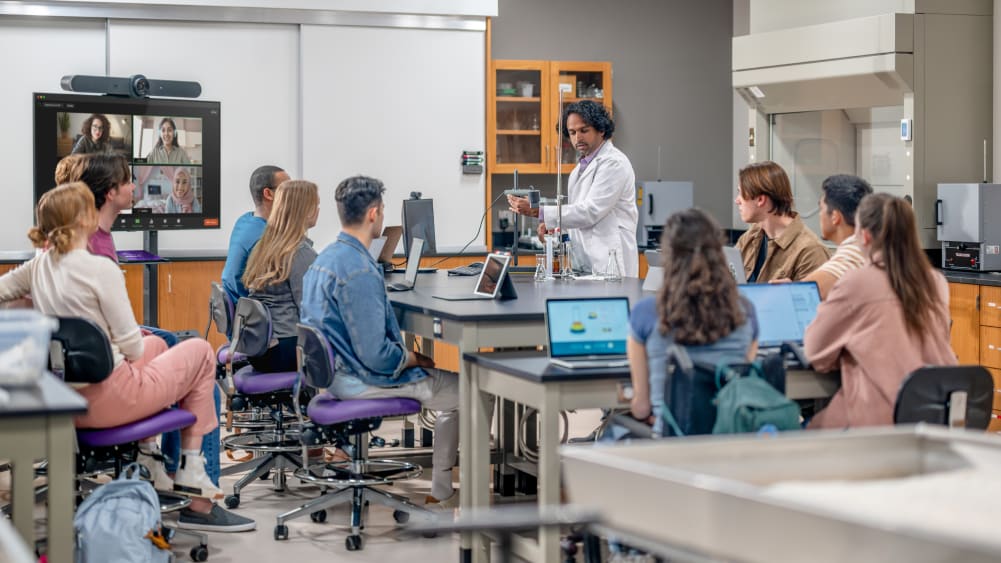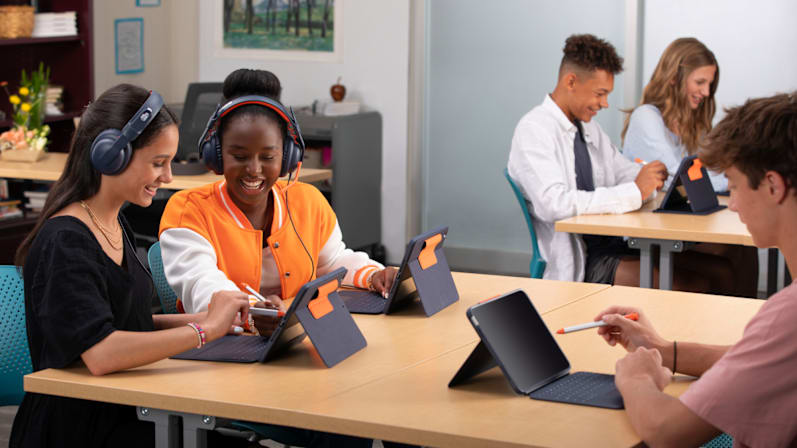How Smart RFPs Lead to Smart Decisions

The request for proposal (RFP) process is an integral step in choosing technology to meet student needs from kindergarten to postgraduate. RFPs for edtech can bring in a lot of useful information from vendors, from their track records to their price and timeline for delivery, but it can be overwhelming to pin down exactly how they can help support students. And with advanced technologies driving the rapid digital transformation of education learning spaces, requests to explain the costs and benefits of edtech solutions should look different than they have in the past. A smart RFP that leads to smart decisions includes some questions that could be overlooked. For the best results, IT and tech leaders should inquire about these 5 factors.
Compatibility and Interoperability
With all the software and hardware involved in the student journey today, tech leaders already know that compatibility and interoperability are the first factors to consider. Vendors that build these qualities into their solutions can help schools and institutions manage costs and provide a user-friendly experience, which helps keep solutions in use, not in closets.
Greater compatibility means fewer required platforms, apps, and required training, while greater interoperability means greater flexibility and fewer hardware components. A highly compatible software solution might look like Logitech’s CollabOS System. CollabOS is a unifying operating system running on select Logitech video collaboration devices. It’s integrated with popular video conferencing and scheduling services such as Zoom, Microsoft Teams, and Google Meet, so that educators can hold hybrid lessons effortlessly without even using a computer. It also enables interoperability for the devices it runs on, letting them all talk to each other without a tangle of cords and adapters.
Interoperability not only enhances the present but also allows tech to adapt to the future. If a school starts on a device with a 3.5 mm AUX port and changes to one that works via USB-C, a solution like the Logitech Zone Learn Wired Headset can make the switch seamless. It features three swappable cord options, which saves tech leaders from having to find all-new headsets if they change solutions. With less to buy, less to maintain, and less that can break or wear out, IT workload drops while learning is elevated.
User Needs
When writing an RFP, remember to conduct interviews with faculty, students, and any other likely end users. Home in on the technical specifications and features they’re looking for, what has worked and not worked for them in the past, and how they plan to use their edtech. Remember to listen to what they might not know to ask for. The more insight drawn out of their answers, the more specific the RFP can be. That helps bring forward technology partners who can meet the unique needs of each school’s students and faculty.
“If a solution doesn’t meet my needs, it doesn’t matter if you’re giving it away — it doesn’t do me any good. After that, I ask whether it can exceed my needs. Can it do more than I even thought of?”
- Jon Hamilton, Audio Visual Manager at Emory University School of Medicine

Total Cost of Ownership
The next factor to inquire about in an RFP is total cost of ownership (TCO). TCO refers to how expensive a solution is over time. It includes several calculations:
The average rate and cost of replacement for the solution
The average amount of training required to use it
The initial price
Maintenance costs
The best way to reduce TCO is to look for solutions durable enough to last and so seamless that students and educators can use them on the first try.
Rather than gravitating automatically toward the cheapest solution, tech leaders’ highest priority should always be finding solutions that fit perfectly with users’ routines, curriculum, and preferences. Also, consider that the cheapest solution by sticker price may end up having a higher TCO than others, if it requires maintenance more often, or if it requires training from IT to use. Higher-quality solutions may not only break less, glitch less, and cause less interruptions, but also provide a superior experience the whole time they are being used.
Logitech’s solutions are tested extensively for durability — they’re drop- and wipe-tested to ensure they can withstand bumps, falls and regular cleaning. Also, TCO is a priority from the beginning of our design process, with features like replaceable cords and earpads for the Logitech Zone Learn Wired Headset. That way, educators don’t have to replace entire units if a single part fails. A smart RFP should uncover advantages like these, to help IT and tech leaders figure out which vendors show an overall commitment to user-centered solutions.
Warranty and Support
A strong warranty and robust support can help IT teams keep their solutions up to date, troubleshoot, and avoid disruptions if something breaks or needs to be replaced. Make sure to include a section in the RFP about the kind of assistance providers are prepared to offer after a purchase, and how long the offer lasts. Many companies provide tiered systems of assistance. For example, Logitech Services features three options up to institution-level support, with 24/7 help desk access, a dedicated service manager for each account, and onsite spares for instant hardware replacements.
Also, don’t forget that support can be a design feature rather than something to think about after the fact. Logitech Sync lets IT teams configure and update hardware remotely, automate tasks and alerts, and maximize the performance of their edtech inventory without even activating their service plan.
Sustainability
85 percent of students think institutions should focus on sustainability. As more and more technology makes its way onto campuses and into schools, reducing the environmental impact of devices will be key for creating sustainable education models for the future.
Include RFP questions for vendors that reveal their cultures of sustainability. Do they use eco-friendly materials for their solutions? Are they committed to transparency around their environmental impact? For example, Logitech’s Carbon Clarity program measures the carbon emissions of each Logitech product across its lifespan, from manufacture to end-of-life, and displays that number on the packaging. This allows IT and tech leaders to make more sustainable purchase decisions, holds us accountable, and informs future design choices. Even though schools might not have to report their carbon footprint now, new sustainability policies may require it in the future.
Along with carbon clarity, Logitech is enthusiastically pursuing other Climate Positive initiatives. These include making 3 in 4 products with next-life plastic, using renewable energy, and working with our value chain partners to reduce our carbon emissions by 90 percent by 2030, with a final goal of net-zero by 2047. As a result of these efforts, Logitech is in the top 1 percent of companies for sustainability, with a Platinum rating by EcoVadis.
Smart RFPs Advance Education
Ask the right questions, and find the right solutions. By having a firm grasp of what end users need, and digging into factors like compatibility, TCO, support, and sustainability, tech leaders can write smarter RFPs that make their districts and campuses future-ready, while accelerating the progress of students and faculty.
To learn more about Logitech's suite of education solutions, go to www.logitech.com/education.
YOU MAY ALSO BE INTERESTED IN
Let’s Talk
Learn more about how Logitech can help you shape the future of education.
Contact Sales
THANK YOU FOR CONTACTING US
A product expert will reach out to you shortly.